Having spent many years in upstate New York, I came to love the Adirondack Mountains. Nestled among those mountains are rich forests, iconic streams and scenic lakes. The only way to improve that scenery would be to add a seashore, which is what makes Acadia National Park so special. It combines the best of both those worlds, and was where I led my latest photography workshop.
We started and finished in Portland, Maine, which has the nearest airport to easily fly in and out of. Having people arrive by early afternoon on Tuesday gave us time to make the three-hour drive to Bar Harbor and up Cadillac Mountain for a sunset shoot. Unfortunately, clouds prevented that, so instead I demonstrated low-level lighting with a pair of Lume Cubes. Photography is often about making the best of the situation, so having a “Plan B” is always important.
Early Wednesday morning we began the first of four full days of shooting. I’d been to this area a couple of times before and also done extensive research on best photo locations. That, combined with the knowledge of a friend who lives there allowed me to plan an itinerary that put us in the right places at the right times. As photographers, we value good light, which means taking advantage of early and late light, and planning mid-day shoots for locations where hard/angled light, perhaps with color, wouldn’t be as important (like in forests).
By the end of the workshop Saturday night, everyone was tired and happy. We’d covered a lot of ground, made thousands of photos and had fun as a group. This was one of the small-group trips that I’m doing more of around the U.S. With just six students, an assistant and myself, it’s easy to shift the schedule according to the weather and everyone becomes friends. It’s a model that’s worked well for me, and I plan on doing more of these over the next few years. With the nearness of varied locations, and many great eating opportunities around Bar Harbor (lobster!), I’m sure to lead another trip there next fall. Here are some of the photos and stories from our trip. If you’d like to join me next year, just let me know.
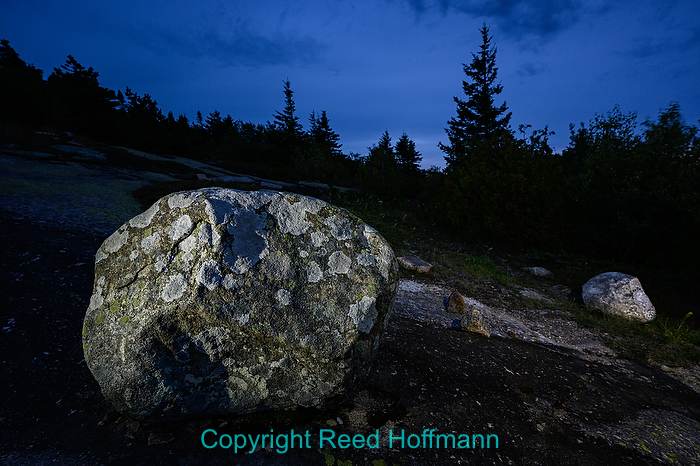
With overcast skies instead of a beautiful sunset, I went to “Plan B” on Cadillac Mountain. That meant getting out a pair of Lume Cubes and showing how to do some lighting. I’m crossing the lights, with one off to the left and the other to the right. Nikon Z 7, Manual exposure, ISO 200, 1/2.5 at f/6.3 in Matrix metering, Nikkor 14-30mm f/4 lens at 16mm.
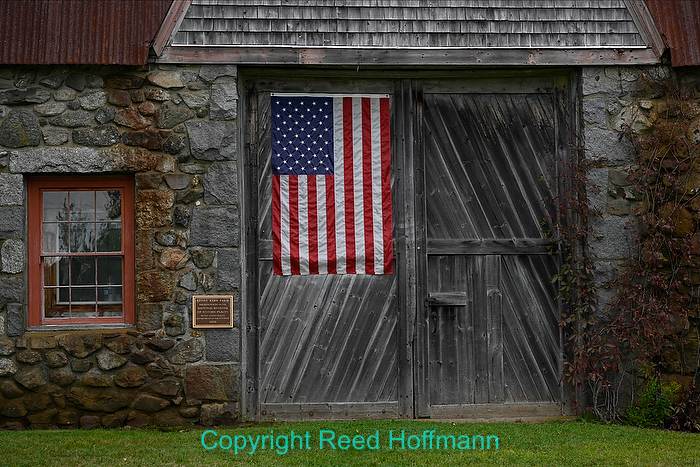
While driving between shoots, I’m always on the lookout for anything interesting for the group to shoot, like this flag hanging on an old barn. Nikon Z 7, Aperture Priority, ISO 200, 1/640 at f/5 in Matrix metering, -1.0 EV, Nikkor 24-70mm f/2.8 lens at 70mm.
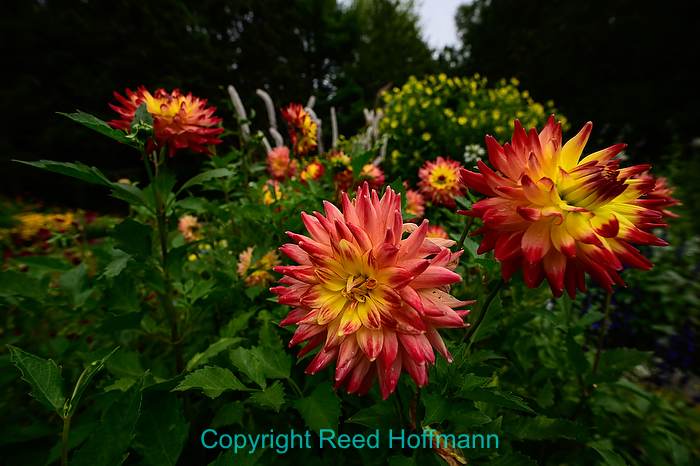
We spent nearly two hours at Thuya Gardens, and could have spent longer. That’s the type of location that works better in diffused light (less contrast), so we visited when it was overcast. Nikon Z 7, Aperture Priority, ISO 125, 1/800 at f/5.6 in Matrix metering, -0.3 EV, Nikkor 14-30mm f/4 lens at 14mm.
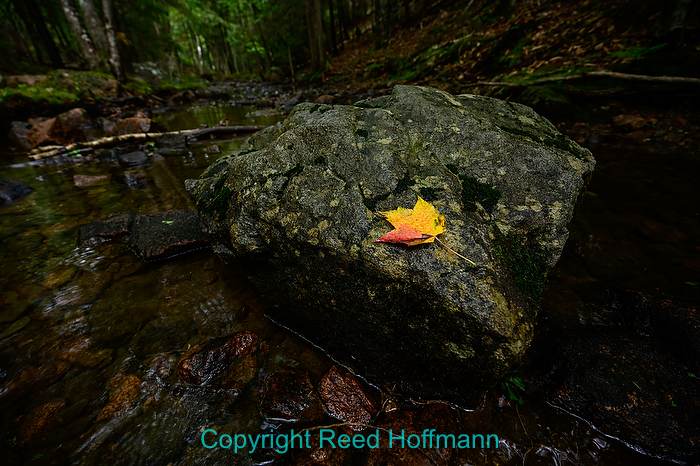
We had it all on our visit to Jordan Pond, clouds, rain and sun. This was during the brief rain shower, when I took a couple of my students down to the creek to see what we could find. Again, the soft light worked better than having hard sunlight. Nikon Z 7, Aperture Priority, ISO 160, 1/30 at f/4 in Matrix metering, -1.3 EV, Nikkor AF Zoom 14-30mm f/4 lens at 14mm.
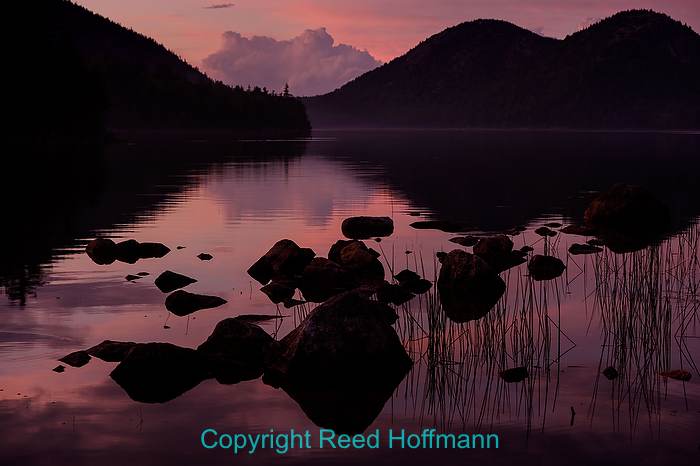
We took a break from shooting at Jordan Pond in the late afternoon to have an early dinner at the restaurant there. That worked well, as the rain cleared and we finished dinner in time to shoot a colorful sunset. Nikon Z 7, Aperture Priority, ISO 100, 1/8 at f/8 in Matrix metering, -2.0 EV, Nikkor 24-70mm f/2.8 lens at 70mm.
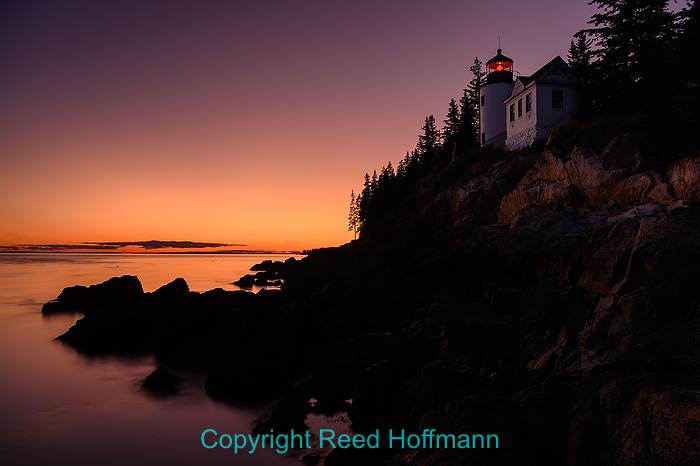
The forecast called for clear skies Friday afternoon, so that’s when I took the group to Bass Harbor lighthouse. An iconic location, we arrived there a couple of hours before sunset to get the spots we wanted (limited room on the rocks for this angle), and were rewarded with a gorgeous sunset. We also stayed well past the sun going down, because as the intensity of the sunset faded the exposure range dropped to where we could see detail in the lighthouse as well. Nikon Z 7, Manual exposure, ISO 64, 5 at f/7.1 in Matrix metering, Nikkor 24-70mm f/2.8 lens at 27mm.
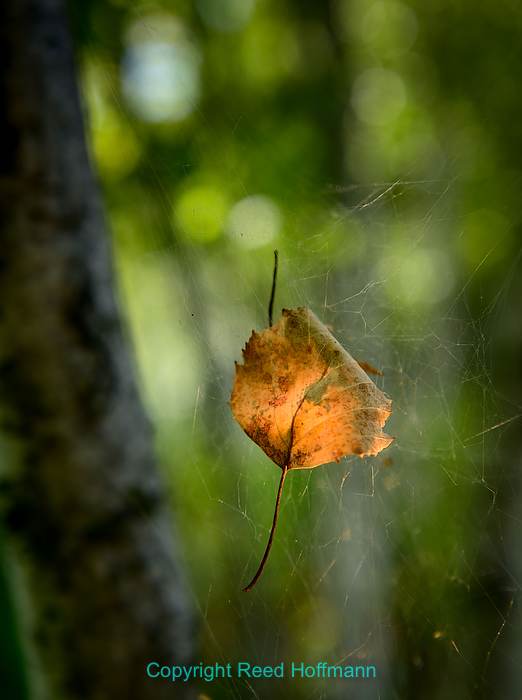
Sieur de Monts is a woods and garden, and another great place to visit if it’s an overcast day. As you can see from this photo, we did have sun, but not where you might think. I found this leaf in a spiderweb between two birch trees, and while there was sun in the background (see the specular highlights), the leaf itself was in shade. So I mounted the camera on my tripod, set the self-timer and used my flashlight to add a little “sunlight.” I usually carry more accessories than needed, because, well, you never know when you’ll need them! Nikon Z 7, Aperture Priority, ISO 125, 1/160 at f/5 in Matrix metering, 0.0 EV, Nikkor 24-70mm f/2.8 lens at 50mm.
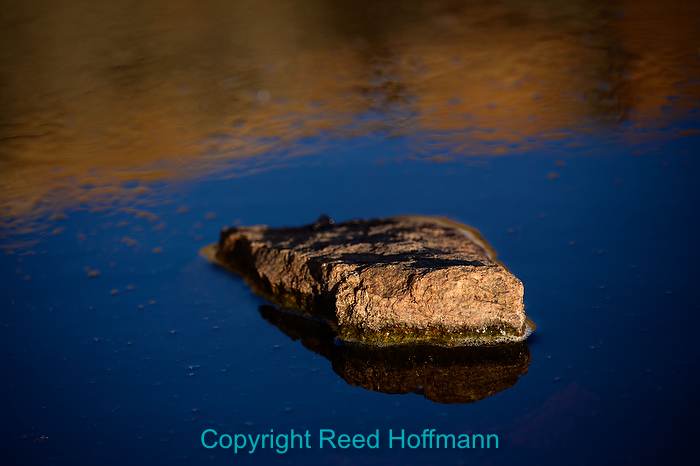
Looking at the forecast, I planned our visit to Schoodic Peninsula for a sunny afternoon. There were several locations I thought would make for good photos, and I hoped to do a night shoot there as well. This was just a small rock in a pool of water as we waited for sunset. Nikon Z 7, Aperture Priority, ISO 100, 1/320 at f/5.3 in Matrix metering, -1.3 EV, Nikkor 70-300mm f/4.5-5.6 lens at 195mm.
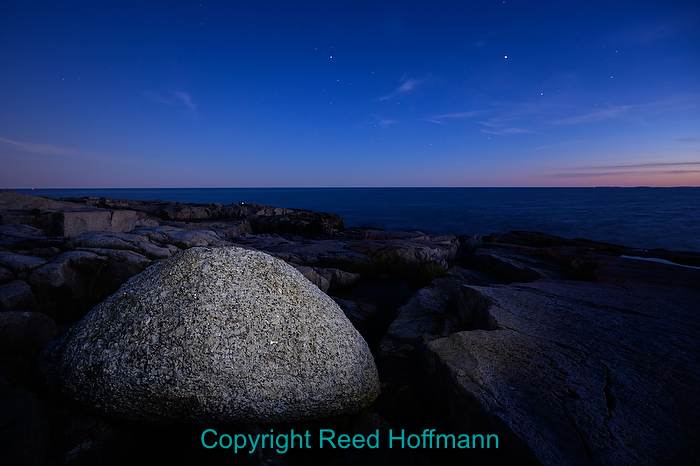
As daylight faded to night on Schoodic Point, stars began to appear. And there was just enough light remaining to illuminate this mostly white rock. I’m always looking for a foreground subject in my wide shots, and the darker rocks wouldn’t have stood out. Nikon Z 7, Manual exposure, ISO 400, 10 at f/5 in Matrix metering, -4.3 EV, Nikkor 14-30mm f/4 lens at 14mm.
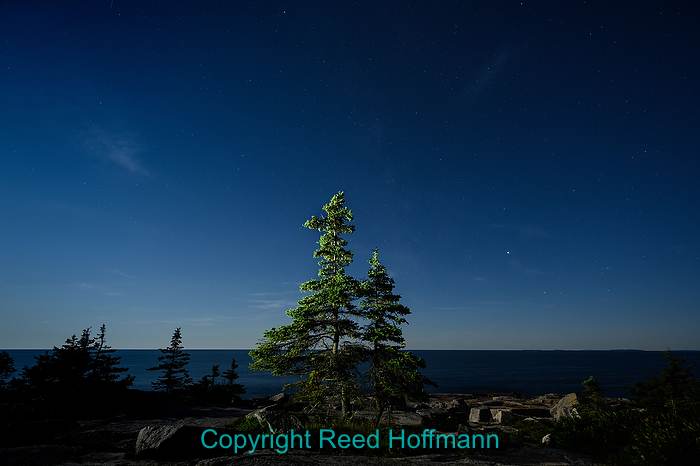
A full moon was rising to the east (left) after sunset on Schoodic Point, which made it harder to show the stars but provided some light for the foreground. As our shoot progressed, I added a bit more light from a Lume Cube to supplement the moonlight, mounting it in a small tree to the left. Nikon Z 7, Manual exposure, ISO 1250, 10-seconds at f/4 in Matrix metering, -4.3 EV, Nikkor 14-30mm f/4 lens at 16mm.
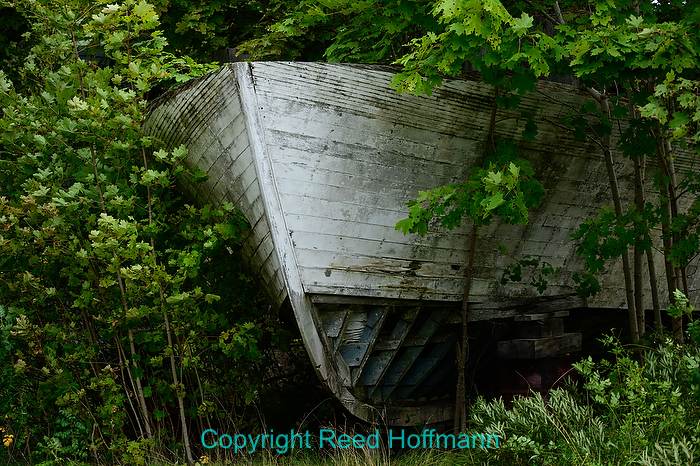
Our last day was overcast, with a chance of rain, so I chose locations that might work well in those conditions. This scene looked much better in that light than it would have in full sun, because the added contrast would have made the details hard to see. Nikon Z 7, Aperture Priority, ISO 250, 1/250 at f/5.6 in Matrix metering, +0.3 EV, Nikkor 70-300mm f/4.5-5.6 lens at 95mm.
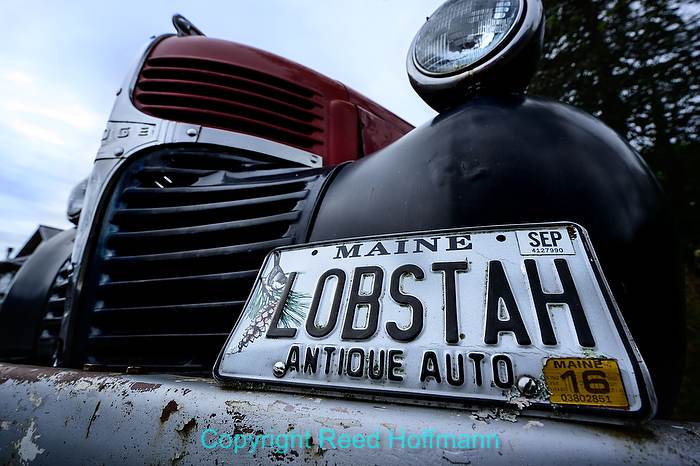
The village of Bernard is a great place to wander for photos, and a lobster restaurant there has an old truck sporting an appropriate license plate. Nikon Z 7, Aperture Priority, ISO 100, 1/250 at f/7.1 in Matrix metering, -0.3 EV, Nikkor 14-30mm f/4 lens at 16.5mm.
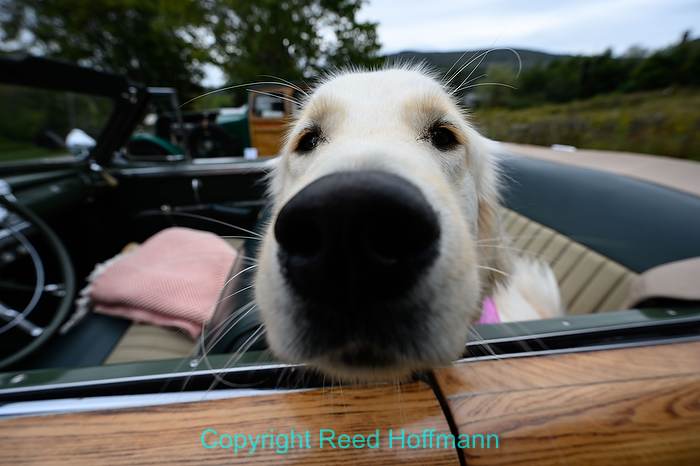
The Seal Cove Auto Museum is an inside venue, but the morning of our visit they were having a car show outside as well. Despite the beautiful old cars, Daisy, a nine-month-old retriever, was my favorite subject. Nikon Z 7, Aperture Priority, ISO 200, 1/500 at f/5.6 in Matrix metering, 0.0 EV, Nikkor AF Zoom 14-30mm f/4 lens at 14mm.
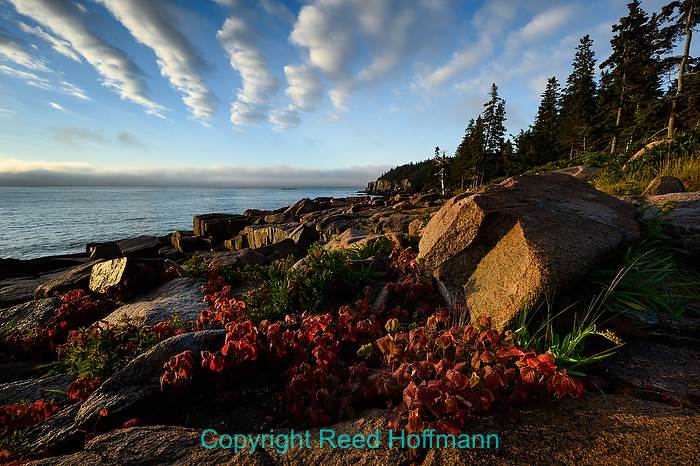
Sunday morning everyone was headed home, and the group I was taking to the airport in Portland wanted to sleep in. I woke up at 5am, and despite being overcast, decided to go out one last time to scout the shoreline. While sunrise was a dud, about thirty-minutes later the sun finally punched through, giving me some golden light and a great sky. The red foliage in the foreground looks nice for the picture, but you don’t want to get too close – it’s poison ivy! Nikon Z 7, Aperture Priority, ISO 125, 1/20 at f/16 in Matrix metering, -0.3 EV, Nikkor 14-30mm f/4 lens at 14mm.
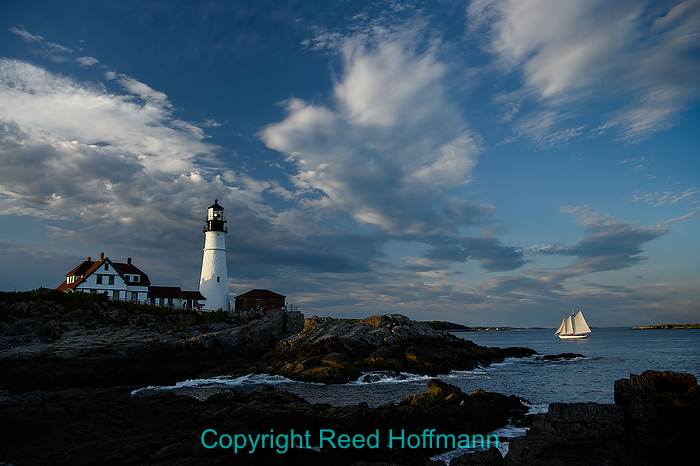
My flight home wasn’t until early Monday morning, so after dropping everyone off at the airport Sunday afternoon, I drove out to Portland Head Light. Luck’s a big part of photography, and that’s what happened here. I got lucky with a sailing ship in just the right place at just the right time. Nikon Z 7, Aperture Priority, ISO 125, 1/400 at f/5 in Matrix metering, -1.3 EV, Nikkor 24-70mm f/2.8 lens at 32mm.

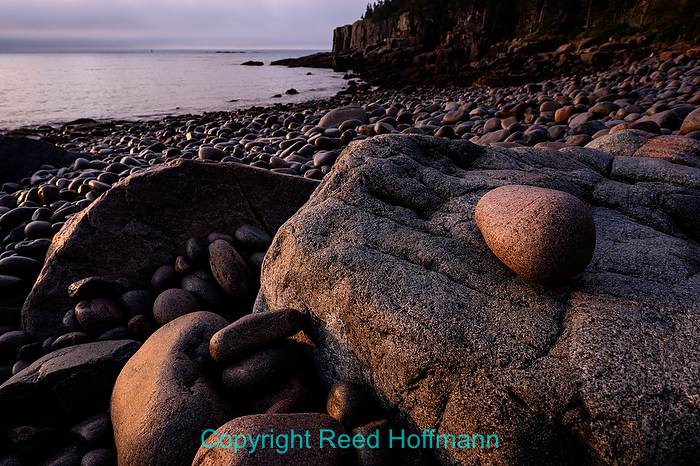
That truck is a ’46 or ’47 Dodge. I asked the owner last Oct as they were closing their restaurant. That truck is left out in the elements year round, he says. Go figure! I hope to be there this coming Tuesday hoping for good foliage. Nice pics btw.
Good luck with the fall foliage, Mark. Let me know how it works out.
I bow to the Master. It was so rewarding to be with you and the participants, the creativity was visceral. And your results are terrific.
Thanks Bill, was great to have you along to help out. Looking forward to seeing you next year!
Beautiful story and even more beautiful images Reed. Looking forward to traveling with you again soon….
Thanks Bonnie, looking forward to doing another trip with you!